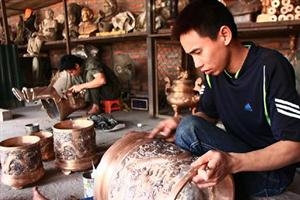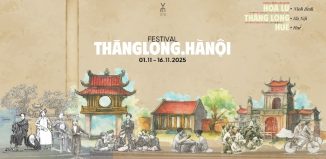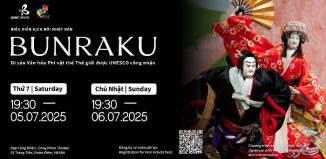Ngũ Xã Island – Part 5
Part 5: All Roads of Vietnamese History Lead to Ngũ Xã Island
Road #1: One of the bodies of the Red River moves and leaves behind an island – an island lying upon very special earth which can be used to make moulds for bronze casting. Also, the fact that it is an island surrounded by water is very important as bonze casting requires the use of extremely hot fires, and fires are very dangerous for cities constructed of wood.
Road #2: The monk Nguyễn Minh Không brings the knowledge of bronze casting and a hoard of bronze from China back to Thăng Long.
Road #3: All of us know full well that Road #2 is just a legend! This is because we know the truth that bronze casting originated in Vietnam some 3000 years ago, early during the Hùng Dynasty, and then the knowledge of bronze casting moved into China with the various ethnic minority groups which live in the mountains and freely move between Vietnam and China. That is why the knowledge of how to cast bronze already existed in China when Nguyễn Minh Không arrived there, and why the Emperor had so much bronze to give to him in the first place!
Road #4: In approximately the middle of the 15th century, after the death of Emperor Yongle, the subsequent emperors eventually closed the Chinese border, thus enabling the production and export of Vietnamese crafts and artisanry, especially porcelain and bronze goods, to expand, eventually to equal that of China previous to that time.
Road #5: The Lê Kings finally defeated the Mạc, and so began the 2nd Lê Dynasty. The various Lê kings were great patrons of the arts and crafts. Therefore, not only to meet their own demand, but also to meet the demand for exported artisanry and created by the closing of the Chinese border, the Lê kings founded Bát Tràng Village near the capital to produce red ceramic products, and they also invited 5 families who lived near and around the capital of Thăng Long to move to Ngũ Xã Island to live there and produce various bronze merchandise, not only for the use of the Lê Dynasty, but also for export to all countries in the east.
And, because these families believe in the legend of Nguyễn Minh Không, they elevated him to be the patron of Ngũ Xã, and since after they built their communal house they have worshiped him there.
Now, you know a great deal about Ngũ Xã Island – but not all!
To read Roman’s previous writting about Ngũ Xã Island, click on the link below:
Ngũ Xã Island – Part 1
Ngũ Xã Island – Part 2
Ngũ Xã Island – Part 3
Ngũ Xã Island – Part 4
| Written in both Vietnamese and English by me, with Vietnamese corrections by my teacher, Nguyễn Thái Tài. Sources: Bronze Casting in Vietnam, Bùi Văn Vượng, Thế Giới Publishers, 2008 Quan Thánh Temple, Hanoi, Friends of Vietnam Heritage, Thế Giới Publishers, 2002 Hồ Tây, Walks Around West Lake, Friends of Vietnam Heritage, Thế Giới Publishers, 2009 Vietnam, a Long History, Nguyễn Khác Viện, Thế Giới Publishers, 2007 Wikipedia.comI need your help: If you know of any upcoming event for this column, please let me know. Thanks, Roman Hanoi Grapevine focuses mainly on contemporary art and culture in Vietnam, but we also post information about events that are part of Vietnam’s rich cultural heritage. |















